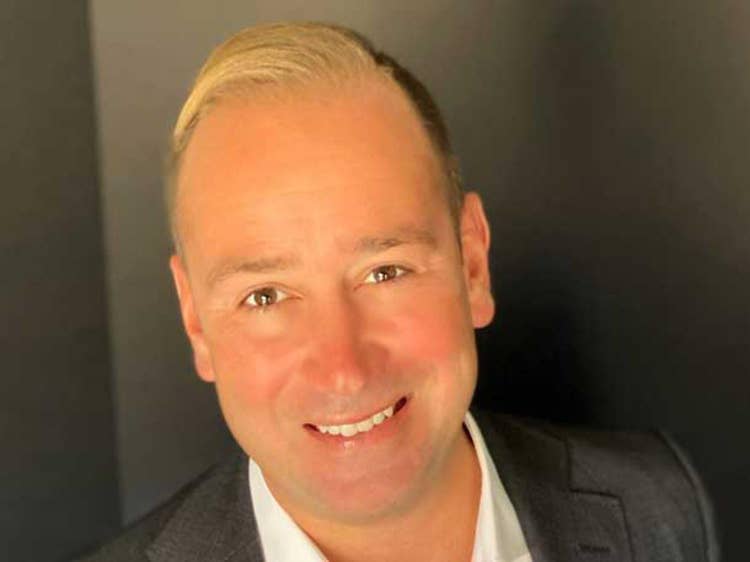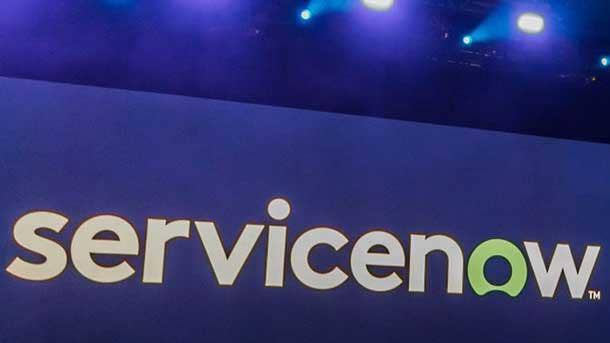CDI’s New CEO Rich Falcone Talks ‘Change Or Die’ Motto, M&A
“We’re adapting to what the market’s doing. We’re pushing our competition out. Quite frankly, we’re share shifting, we’re growing and that’s exciting to people. Change or die is real,” says CDI’s new CEO, Rich Falcone, in an interview with CRN.

CDI Selects New CEO In Sales Guru Rich Falcone
After 20 years of rising through the ranks at red-hot Computer Design & Integration (CDI), Rich Falcone is now CDI’s new CEO with sights set on becoming a $1 billion channel partner powerhouse.
“I strongly believe in this phrase ‘change or die,’” said Falcone, CEO and President of New York City-based CDI in an interview with CRN. “We’re adapting to what the market’s doing. We’re pushing our competition out. Quite frankly, we’re share shifting, we’re growing and that’s exciting to people. Change or die is real.”
Since beginning his career at CDI, which ranks No. 61 on CRN’s Solution Provider 500 list, Falcone has been critical at driving sales to a projected $650 million in 2021, up 20 percent compared to 2020, including $100 million in services sales.
Falcone held top sales positions at CDI over the past two decades and was promoted to president in 2020. In just his one-year span as president, he’s facilitated millions in CDI acquisitions including the purchase of Kintyre Solutions, P5 Solutions, Plan B Technologies and High Availability, with no plans of slowing down M&A in the future.
Under his leadership, CDI this week launched CDI International to focus on customer relationships and driving sales oversees with the opening of two new offices in England and Ireland. Falcone says he’s looking to take CDI to the next level on a global scale with the bullish philosophy of change of die as the new CEO.
“I see a lot of frustrated clients who are frustrated with their legacy partners, not personally, just with their inability to get them where they need to go in this new, multi-cloud digital transformation world we’re living in,” Falcone said. “We’ve always had a great change or die culture, but now the way the market is changing and the pace it’s changing, it’s more important than ever. … It’s a competitive world. You wake up in the morning every day and someone’s trying to take your customers, that’s how it works.”
Falcone talks to CRN about staying relevant and adapting to customers’ needs in 2021, CDI’s growth around ServiceNow and managed services, as well as his company’s acquisition strategy ahead.

Talk about your ‘change or die’ motto and how important it is for CDI’s future.
I strongly believe in this phrase “change or die.” If you look at CDI when I started, we were maybe 30 people on $30 million and 99 percent of our revenue came from HP Unix systems. You look at all the change over those 20 years that CDI has made -- partnering with different solution providers, expanding through acquisition, picking up new capabilities, etc. We’ve always had that sort of culture in being good at adopting to what the markets doing, but if you look at what’s happening now and the pace of the change to the customers in this multi-cloud operating model, while simultaneously going through a digital transformation, I feel a lot of our competition has not changed.
I think they’re still going to market the way they went to market five years ago. It’s different now than it used to be. We used to spend a lot of time talking about features of technology -- this product versus that product -- and customers would rightfully use us to help pick the best product from whichever vendor made sense for that particular project. We don’t really spend a lot of time doing that anymore. A lot of these products work very well, but a lot of times now the outcome the customer is going for is a lot different than it used to be and the product conversation will come, but it will come later.

Can you give me some examples of customers needing CDI to ‘change or die’?
Right now, a lot of developers and application owners went to the public cloud. They went to the hyperscalers for certain workloads and they had a phenomenal experience. They logged on to a service portal, pressed a button, and they got what they wanted for their technology workload environment within seconds, and it worked perfectly. Then for the applications that need to remain hybrid, which in our client base is quite a bit, they want that same experience. They want that developer to receive their Kubernetes-based environment, container-based environment, within seconds through a service portal leveraging automation. And they want it to feel like they shouldn’t know the difference if it’s public or private.
So to do that, there’s a lot of things you have to do that you as an organization that probably didn’t do four or five years ago. You have to have some sort of ITSM [IT Service Management] service portal experience and we partner heavily with ServiceNow for these type of things. Also keeping things like your CMDB [Configuration Management Database] up to date is a lot more challenging when you’re in five clouds and four on-premise data centers. You’re trying to automate everything -- not just the network, not just the compute and the IaaS, but you’re trying to automate the entire experience for the end user. You’re trying to secure it across multi-cloud, across multiple sites, and you’re probably leveraging software-definition wherever possible.
Objectively, five years ago, CDI couldn’t have brought a lot to that conversation because a lot of those problems weren’t here. We had to go grow both organically and inorganically. In the last couple years, we’ve had four acquisitions that have brought us a lot of capabilities in these spaces, as well as made us deeper and more scalable in what I’ll call the traditional spaces around the foundational infrastructure stuff.
So we have a lot of accounts who say, ‘Look, we’ve been buying networking or storage or compute from this vendor for the last 15 years. We like the company, but they just don’t have what it takes to software-define my network, to automate my service delivery, to set up the service portal. It should feel like the public and private are the same experience. They just don’t have these [solutions for us]. And CDI, the more and more we interact with you, the more we realize that you have the answers.”
Look, if someone can’t provide these sort of modern services, and as-a-service-driven conversation, it might be time to look for a new partner. … A lot of customer conversations are around the operating model conversations, the DevOps conversation, the infrastructure as code conversation, the digital transformation conversation, the service portal, etc. those happen first. Those conversations are six months to a year before they decide what the right infrastructure is to land on.

What do customers want that CDI can provide that another channel partner who hasn’t adapted to change yet, or even large vendor, can’t offer?
Customers ideally would like to speak with one firm through that lifecycle, and through that experience, and we see a lot of our competitors can only compete in aspects of it. Maybe they know VMware really well or maybe they know ServiceNow really well -- there’s not a lot that know both really well. In many cases, those two products can combine for a better experience for that developer to access his environment, leverage VMware, leverage service portal, leverage ServiceNow, etc. So we just see a gap.
Then on top of that, customers now want a lot of these things managed. So our managed ServiceNow product is our fastest growing managed services product. It’s our number one seller from an MSP perspective. That was a market where there was a gap. … Back to the change or die theme, it’s something we came out with just a few years ago that now it’s our number one revenue producer for managed services.
If I look at the market, I see a lot of frustrated clients who are frustrated with their legacy partners, not personally, just with their inability to get them where they need to go in this new, multi-cloud digital transformation world we’re living in. So it’s a great opportunity for CDI to provide those solutions to those clients and more opportunity for our people to learn different technologies across the businesses. We’ve always had a great change or die culture, but now the way the market is changing and the pace it’s changing, it’s more important than ever.

As the new CEO, do you plan to continue making several CDI acquisitions every year?
From a geographic perspective, we’re open to anything, but we are focused on the East Coast – that’s an area where we feel we play well and where we want to invest. Again, open to anything, but for now, we like being focused on the east coast.
When we look to acquire, there’s got to be one of two things that happened. The first one is, it’s a geographic expansion that we want to enter a new market with. We find a great company with great people, great customers, and we feel combining our service catalogs together will benefit both of our customer bases. And that’s how we enter that market. For example, the Philadelphia Metro market with High Availability; or the DMV market with Plan B. Those were market entry as well as some key complementary capability assets.
The second type has nothing to do with geographics at all, it’s just a capability marriage. So P5 took us to another level with their digital transformation and their ServiceNow practice. Kintyre took us to another level with DevSecOps and what they do with Splunk. We want to take those capabilities across all of the geographies.
It’s a competitive world. You wake up in the morning every day and someone’s trying to take your customers, that’s how it works. [Companies we acquire] know they’re under a bit of an attack from companies like CDI who have made these changes.

Why has there been so much M&A consolidation in the channel in recent years, like how CDI bought four companies in just one year?
Think about it. Why didn’t they have their business be acquired five years ago? Why was it this year?
A lot of what’s happening is the pace of change is tough to keep up with, but you have to because that’s what the customers are doing. They’re moving to these hybrid cloud, digitally transformed models. They’re moving to digital workflows. They’re moving away from spreadsheets and emails, and wanting everything be a digital experience. They’re moving to put the workload where it makes sense: on-prem, off-premise, public cloud, hyperscaler, etc. and let business logic and automation drive that outcome. It’s just difficult for a lot of companies to meet these needs and it makes sense to partner sometimes at that point.
Our M&A has been a win-win. CDI is having tremendous growth this year across all the businesses. We’re looking at potentially 20 percent growth this year overall. That’s great and that’s coming off our best revenue year ever for all the individual organizations.

How is CDI growing total sales by 20 percent in 2021 coming off a record revenue year in 2020?
We’re on a frenzy hiring pace right now. We have brought in some great engineers, great account managers -- people want to work here. They want to be a part of this. They see what we’re doing. It’s real. It’s not just talk. We’re making these changes. We’re adapting to what the market’s doing. We’re pushing our competition out. Quite frankly, we’re share shifting, we’re growing and that’s exciting to people. Change or die is real.
Some leadership teams get a little paralyzed -- I call it rearview mirror syndrome. Like, when you drive a car, you spend 98 percent of the time looking at the front windshield. You look in the rearview mirror every now and then, you don’t really want to, but you have to. A lot of our competition is rearview mirror syndrome right now. They’re guilty of sort of looking at their past paradigm, and their past model, and just not adapting the way that we’ve done it.
It’s reflected in our numbers. We’re going to come up on $650 million in revenue this year. We were $330 million at the end of 2019. That’s both organic and inorganic at record growth, with record consulting levels -- almost $100 million of total combined services this year. We’ve done a lot right, and we got a long way to go, we can always get better. Everyday were waking up trying to get better and actually doing something about it to get better.

What vendors is CDI betting on for 2022 and beyond?
Having a commercial model for on-prem infrastructure that feels like the commercial model of the public cloud in terms of pay as you utilize – you’re seeing a lot of activity in this space. Dell is coming out with Apex in that space, obviously HPE with GreenLake, Pure Storage has very similar services -- so the companies that get that right will make a significant impact. The customers want that. The channel community is working with the with the vendors to get that right for the client, get it right from a capital perspective, and get it right from the channel partner. I’m seeing a lot of progress there with some of the companies we just mentioned.
We’re going to continue to bet on ServiceNow because it brings a ton of value to the workplace and the workflows. [ServiceNow CEO Bill McDermott] said something along the lines of, ‘Behind every great experience is a great workflow.’ And that’s true and there’s a lot that we can do to digitally transform our customers in that space.
Security is always interesting because there’s so many companies so it’s tough to single out one or two. I think we’re betting on ourselves there with some of our managed security offerings and the controls assessment.
Cisco remains a critical partner to us and to our customers. They’re incredibly strategic to many aspects of our client’s infrastructure.

What are some of the biggest IT bets for CDI heading into 2022?
Specifically, we have big bet in managing a customer’s ServiceNow instance as a managed service delivered by CDI in a managed service model. That’s been a huge, huge success for CDI. We made an acquisition of a company called P5 that deepened our ServiceNow expertise quite a bit as well.
We’ve got big investments this year in managed security. We have a continuous controls assessment that helps customers keep a steady pulse and steady visibility into their controls and security. And we offer that as a managed service around managing a customer in real time with access controls and access points into their environment to keep them secure. … Kintyre was a big bet we made in the DevSecOps space to get us deeper with DevSecOps and all the security aspects that they brought to the table around it.
Another big bet is we see Splunk playing a major role going forward in helping our customers in the DevSecOps and observability space. Kintyre was also a big tier one Splunk service provider.
We hold some the highest certifications with our vendor community: Dell Titanium, Cisco Gold, ServiceNow Elite, we have all the Azure and AWS certifications, and then we have a strong managed service business to manage it. A lot of these projects require essentially four different market segments of consulting providers and the customers are left dealing with four companies to create some of these outcomes. We can be the one company to get there and help them manage it.